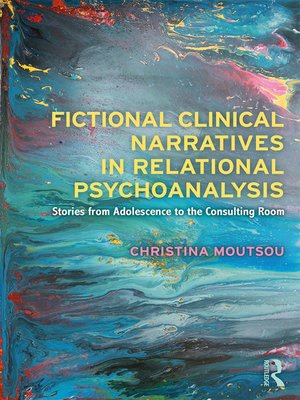Fictional Clinical Narratives in Relational Psychoanalysis
ebook ∣ Stories from Adolescence to the Consulting Room
By Christina Moutsou

Sign up to save your library
With an OverDrive account, you can save your favorite libraries for at-a-glance information about availability. Find out more about OverDrive accounts.
Find this title in Libby, the library reading app by OverDrive.



Search for a digital library with this title
Title found at these libraries:
| Library Name | Distance |
|---|---|
| Loading... |
Fictional Clinical Narratives in Relational Psychoanalysis explores the therapeutic space between the patient and therapist in psychoanalysis and the transformative effect of the therapeutic relationship through a collection of twenty-two short stories beginning at a moment of trauma in adolescence. Christina Moutsou illustrates both contemporary clinical issues as well as the relational and intersubjective nature of the therapy relationship.
First, six teenagers narrate in the first person their experience of battling with sexual abuse, eating disorder, body image, the first sexual awakening, loss of a parent and the intricacies of teenage friendship. The stories then unravel years later as adults in the consulting rooms of Ellie and Jake, two middle-aged therapists working in London. The reader is offered an intimate look at how the therapists work through their personal losses and past wounds, while facing their patients' conflicts and dilemmas including adoption, bereavement, pregnancy loss, lack of intimacy in the couple relationship and a diagnosis of borderline personality disorder.
What distinguishes this collection of fictional clinical narratives is the focus on an internal point of view, where the reader is invited to experience first-hand the tribulations of the psychoanalytic dialogue and the enduring marks that trauma and loss leave on each member of the therapeutic dyad. The focus here is on how narratives are constructed and deconstructed through the intersubjective dance between the therapist and the patient. Both are transformed in the process. The fictional nature of the stories also allows for the exploration of sensitive issues that are difficult or awkward to explore adequately using direct case studies from real-life examples.
This fascinating and unusual work provides an innovative method of exploring everyday clinical dilemmas, using an accessible, easy to follow narrative path. It is written from a broadly relational perspective but will appeal to all psychoanalysts and psychoanalytic psychotherapists.







